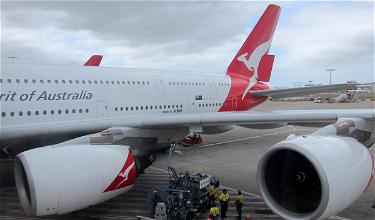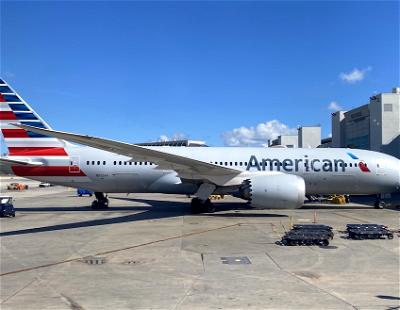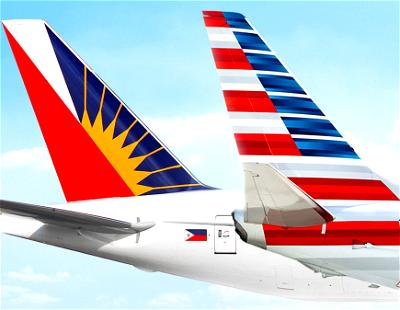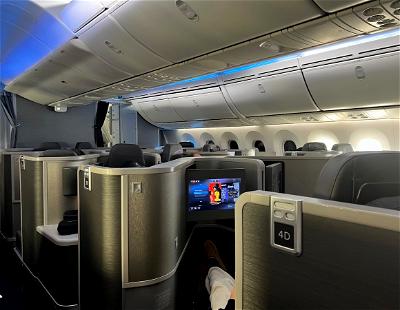In November 2016, the US Department of Transportation blocked the expanded joint transpacific joint venture that American and Qantas had requested. Interestingly the expanded joint venture was approved by Australian authorities, while the US thought that the proposed alliance would substantially reduce competition and consumer choice, without producing sufficient countervailing public benefits.
American and Qantas seemed pretty confident that their request would be approved. On the basis of the joint venture being approved, American launched flights from Los Angeles to both Sydney and Auckland.

So they were quite disappointed when it was rejected. However, rather than appealing the decision right away, they decided on a different strategy. They planned on refiling once Trump was in office, hoping that his administration would take a different approach — American First, if you will. 😉
In early 2017, American and Qantas scaled back the extent of their relationship:
- Qantas no longer codeshares on American Airlines’ services between Sydney and Los Angeles as of February 1, 2017
- Qantas adjusted its Qantas Frequent Flyer policy with American Airlines to bring it in line with other oneworld carriers as of May 1, 2017
One of the reasons they made this change was so that when they refiled their application for a joint venture, they could show the public benefit of such a joint venture.
This shouldn’t come as a surprise — I’m actually surprised it took so long — but American and Qantas have just refiled their application for a transpacific joint venture, for travel between the United States and Australia/New Zealand. Per American Airlines’ press release:
The proposed joint business will significantly improve service, stimulate demand and unlock more than $300 million annually in consumer benefits that are not achievable through any other form of cooperation, including:
- Up to $221 million in value from expanding codesharing between American and Qantas – opening more connections to more destinations.
- Up to $89 million in value by offering a wider range of fare classes across each other’s networks, including lower fares and discounts.
The joint business will also give American and Qantas the opportunity to launch additional routes between the U.S. and Australia and New Zealand, including new flights to city pairs currently not served by either carrier.
An expanded relationship will encourage significant improvements in the overall customer experience, including additional frequent flyer benefits and investments in lounges, baggage systems and other infrastructure designed to better serve the carriers’ joint customers.
All these benefits will stimulate significant demand for new travel – generating up to 180,000 new trips between the U.S. and Australia and New Zealand every year.
The press release goes on to make warn of what could happen if the joint venture isn’t approved:
Critically, if the joint business is not approved, American and Qantas will have no choice but to further reduce codesharing on their networks. This will jeopardize the number of services and routes each carrier flies between the U.S. and Australia and New Zealand.
For example, Qantas may be forced to reduce the frequency of, downgauge or potentially cancel its A380 service between Sydney and Dallas/Fort Worth, and American may further reduce its services between Los Angeles and Sydney and Auckland. These routes rely on codeshare support from each airline’s feeder network via their respective hub cities to be economically viable.
Here’s a “fact sheet” they have about the potential joint venture:

As I always say, a joint venture is often a double edged sword in terms of the consumer benefit. The positive aspects of joint ventures are that they create a more seamless travel experience, and lead to better schedule coordination, new routes, and more frequent flyer benefits.
On the the other hand, a joint venture is the equivalent of eliminating a competitor in the market, since it allows two airlines to essentially act as one, and fix pricing.
So some of the claims are true — a joint venture could be good in terms of the number of destinations that American and Qantas serve. However, there’s simply no way to rationalize that this would lead to “up to $89 million in lower fares from more efficient pricing.” Joint ventures in markets with limited competition (as is the case between the US and Australia/New Zealand) lead to higher pricing, and not lower pricing. American bases this argument on the following:
Joint pricing of connecting itineraries eliminates double marginalization and generates up to $89 million in annual consumer benefits
While that part of it is true, that’s only one small part of the pricing equation. A much bigger part of the equation is that airlines price based on their competition, and with one less competitor, they won’t have to be as aggressive with their pricing. That’s not factored into their math.
Bottom line
I’m curious to see whether the joint venture gets approved under the Trump administration, after being shot down by the Obama administration. The airlines didn’t seem to expect the result they got last time, so maybe they’ll get luckier this time. On balance I do think there’s probably a mild consumer benefit to the joint venture, as we could see expanded cooperation, which may lead to more routes. However, don’t expect that this will lead to lower fares.
Do you think the American & Qantas joint venture will be approved this time around?





So that explains why Leigh Clifford (QF Chairman) was amongst the business heavies accompanying Malcolm Turnbull's visit to Donald Trump last week.
If the JV produces the reduction in airfares that have been achieved by the AA/BA/IB/AY JV for trans-Atlantic flights, then I'm all for it. I realise that the volumes for trans-Pac aren't anywhere near the same, but anything that encourage the market to use any airport other than LAX as the transit point...
So that explains why Leigh Clifford (QF Chairman) was amongst the business heavies accompanying Malcolm Turnbull's visit to Donald Trump last week.
If the JV produces the reduction in airfares that have been achieved by the AA/BA/IB/AY JV for trans-Atlantic flights, then I'm all for it. I realise that the volumes for trans-Pac aren't anywhere near the same, but anything that encourage the market to use any airport other than LAX as the transit point has to be a good thing.
Also, can anyone explain why ABX is a codeshare location for AA? I can't imagine Albury / Wodonga being on anyone's vacation bucket list.
This clipping is from the Wednesday, 28 Feb 2018 issue of New Zealand Herald Digital Edition.
Qantas, American bid for more Pacific flights
Airlines say competition is already strong
Qantas and American Airlines are trying again for approval for a joint venture which they say will lead to cheaper flights across the Pacific, benefiting all passengers , including New Zealanders .
The two airlines say that without approval, American Airlines may have...
This clipping is from the Wednesday, 28 Feb 2018 issue of New Zealand Herald Digital Edition.
Qantas, American bid for more Pacific flights
Airlines say competition is already strong
Qantas and American Airlines are trying again for approval for a joint venture which they say will lead to cheaper flights across the Pacific, benefiting all passengers , including New Zealanders .
The two airlines say that without approval, American Airlines may have to further reduce services between Los Angeles and Auckland, seen by the travel industry as a crucial non-stop route to keep fares down on the route between New Zealand and the United States.
The new application with the US Department of Transportation (DOT) says its success would significantly improve service, stimulate demand and provide more than US$300 million ($410m) a year in consumer benefits that are not achievable through any other form of cooperation.
“The joint business will also give American and Qantas the opportunity to launch additional routes between the US and Australia and New Zealand , including new flights to city pairs currently not served by either carrier.”
An expanded relationship will encourage significant improvements in the overall customer experience, including more improved frequent flyer benefits and investments in lounges, baggage systems and other infrastructure designed to better serve the carriers’ joint customers. These would stimulate significant demand for new travel
– generating up to 180,000 new trips between the US and Australia and New Zealand every year.
The applicants emphasise already strong competition across the Pacific including that from Air New Zealand which has targeted Australia as a source of passengers to fly through Auckland. “In fact Air New Zealand now flies the equivalent of a 777-worth of passengers a day from Australia to North America which is significantly more than the number American flies between Australia and North America.”
In 2016 the DOT knocked back an application to extend a deal which the airlines said then didn’t take into account precedent, intense competition on the transpacific route and the benefits of a closer relationship between the two carriers.
Since then co-operation between the airlines has, by economic necessity, retrenched, they said in yesterday’s application. “American has been forced to downgrade its service to Australia and New Zealand, and the parties have stopped code sharing on flights between the United States and Sydney.”
Without approval for the deal, existing cooperation will at best stagnate or, more likely, continue to deteriorate. The volume of US point-of-sale passengers on American’s flight to Auckland drops significantly during winter in the Southern Hemisphere.
“And this fall off makes service on this route not viable without the close cooperation of an Australasian partner.”
Approval for the application would “facilitate” American restoring its New Zealand service to year-round . Daily Auckland-Los Angeles services began in 2016 but quickly dropped from yearround to seasonal and were suspended for an eight-week period across August and October. American and Qantas have cooperated on services between the United States and Australasia for decades, but their relationship has never extended to revenue-pooling , which has limited their willingness and ability to cooperate and caused them to miss opportunities for significant efficiencies, the application says.
The airlines say deeper integration through a joint venture would enable them to better compete with the two rival alliances that the department had given anti-trust immunity ; United Airlines and Air New Zealand out of Auckland and Delta and Virgin Australia from Australia.
Air New Zealand now flies the equivalent of a 777-worth of passengers a day from Australia to North America.
American Airlines’ and Qantas’ application
Copyright © 2015 New Zealand Herald Digital Edition
This should be approved. I'm a Qantas flyer and I want things convenient after long trans-pacificflights. Our government approved it the first time due to being forward thinking. It's time your's in Washington sees the light. I maybe naive but I don't see why it would reduce carriers or competition. If there was any competitive umph in UA and DL they'd turn on the competition instead of whinging about it as the US carriers do about the ME3.
Auckland misspelt indeed; also a pretty interesting concept of where Christchurch is!
If this to be approved (and it will be), United will surely add Australia to their JV with ANZ, creating a duopoly. Delta might follow with a JV with VA.
Tony - A JV is not required for codesharing. As Lucky clearly said, they were there before and were only removed to deliberately hobble the routes in order to make a JV application look better.
I don't really care whether it's approved or not, but not setting a precedent where airlines can effectively blackmail you is one reason why it may not be a good idea.
How is this bad for consumers? We lost the 77W because there was no JV so AA could not fill the plane with QF codeshares they were forced to downgrade. I for one do not enjoy buying separate domestic tickets in Aus that earn 50% of miles flown because theres no AA flight number attached.
Will AA bring 777 back on this route?
This can only be bad for consumers: they'll just squeeze the routes even more than they are now.
Should also note that Australian authorities and New Zealand authorities both approved of the JV the first time round...
The lack of joint pricing has been extremely frustrating as an Australian living in LA who is loyal to AAdvantage for practical reasons (but would rather fly on QF when going home and around Asia) - I'm looking forward to being able to use the QF codeshares to Sydney again.
Not sure if you noticed but AA spelt Auckland wrong on that fact sheet (Aukland)
"They planned on refiling once Trump was in office, hoping that his administration would take a different approach — American First, if you will"
Not sure if that strategy will pay off. Trump may confuse it with Qatar given that the Orange chap clearly gets confused quickly. #Nambia #BelgiumIsABeautifulCity #ParisGermany #Tan-zayn-ia #Israel'sNotInTheMiddleEast #covefefe